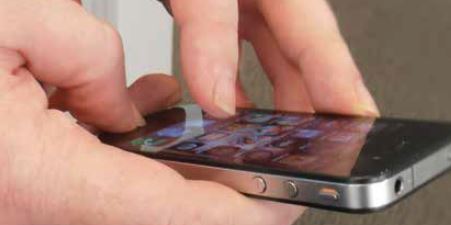The Driver's Handbook
Mobile phones while driving

You must not use a hand-held mobile phone while your vehicle is moving or is stationary in traffic (for example, at traffic lights). You may, however, use a hand-held mobile phone while your vehicle is parked.
- If a person wishes to make or receive an audio call, including dialling a number and needs to touch any part of the phone to do so, that phone must be mounted (in a mounting commercially designed and manufactured for that purpose).
- If the phone is being used via blue tooth, a headset or earphones without touching, holding or resting the phone on any part of their body (including their lap), the driver may touch the earpiece or headphone to operate the phone (the phone may be located anywhere in the vehicle, including the driver's pocket or pouch they are wearing). Drivers must ensure phones do not rest on or touch their body while driving, regardless of use.
- It is an offence to create, send or look at a text, video message or email on a mobile phone while driving, even if the phone is secured in a mounting affixed to the vehicle.
- It is an offence to make or receive a video call on a mobile phone while driving.
- Drivers of police or emergency vehicles are exempt.
This does not apply to a driver's aid, such as vehicle system equipment, dispatch system, ticket issuing machine, navigational system, rear view screen, or closed circuit security camera.
Drivers can now use a mobile phone to pay for goods and services while the vehicle is stationary in a road-related area. This includes using a mobile phone’s Apple Wallet or similar Android App to make electronic payments at a drive-thru outlet or car park, or the use of QR codes or vouchers for similar purposes. Drivers may also show identification on their mobile phone (for example a digital driver’s licence), where they are required to do so, or where the phone is required for entering or leaving a road-related area.
This exemption applies to Learner’s permit and P1 licence holders who are otherwise prohibited from using any function of a mobile phone while driving.
Research has found that using a mobile phone while driving increases the risk of having a crash where someone is injured up to four times. Texting increases the risk of a crash even more.
Using the GPS function on a mobile phone while driving
You can use the GPS function on your mobile phone only if the phone is fixed to the vehicle in a commercially designed and manufactured mounting and you do not touch it while you are driving. You will need to set the GPS location on your mobile phone before starting your journey and, if you need to make any changes while you are driving, you will need to pull over and park before making those changes.
Remember, if you are a learner's permit or provisional (P1) licence holder you are prohibited from using any type of mobile phone function while driving. The mobile phone ban includes:
- using hands-free mode including Bluetooth technology
- loud speaker operation
- GPS
- text messaging.
































